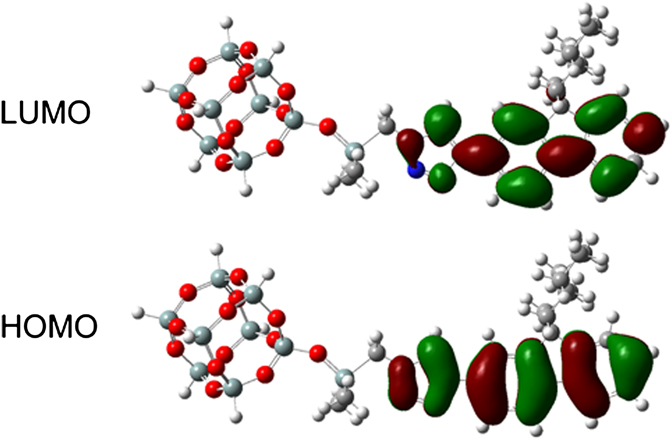Published online by Cambridge University Press: 08 April 2013

The organic light-emitting (OLE) materials have attracted great interest due to their potential applications in sensors, biodetectors and OLE devices. However, highly efficient emission from organic solids is still a great challenge because of the aggregation-caused quenching effect. In this article, a three-dimensional (3D) organic-inorganic hybrid nanoparticle, based on polyhedral oligomeric silsesquioxane (POSS), was precisely fabricated via click chemistry with high yield, and its structure was characterized by Fourier transform infrared spectroscopy, 1H, and 29Si nuclear magnetic resonance spectroscopies, and Matrix-Assisted Laser Desorption Ionization Time-of-Flight Mass Spectrometry, respectively. The resultant 3D organic-inorganic nanohybrid showed significantly enhanced emission in solid film (Φfilm 80%) with a slight red-shift as compared with its organic counterpart, (Φfilm 14%), which exhibits a large red-shift in solid film, due to the deaggregation effect of POSS. Simultaneously, the resultant nanohybrid also exhibited good film formability, excellent spectrum and thermal stability (>250 °C) due to the introduction of POSS.